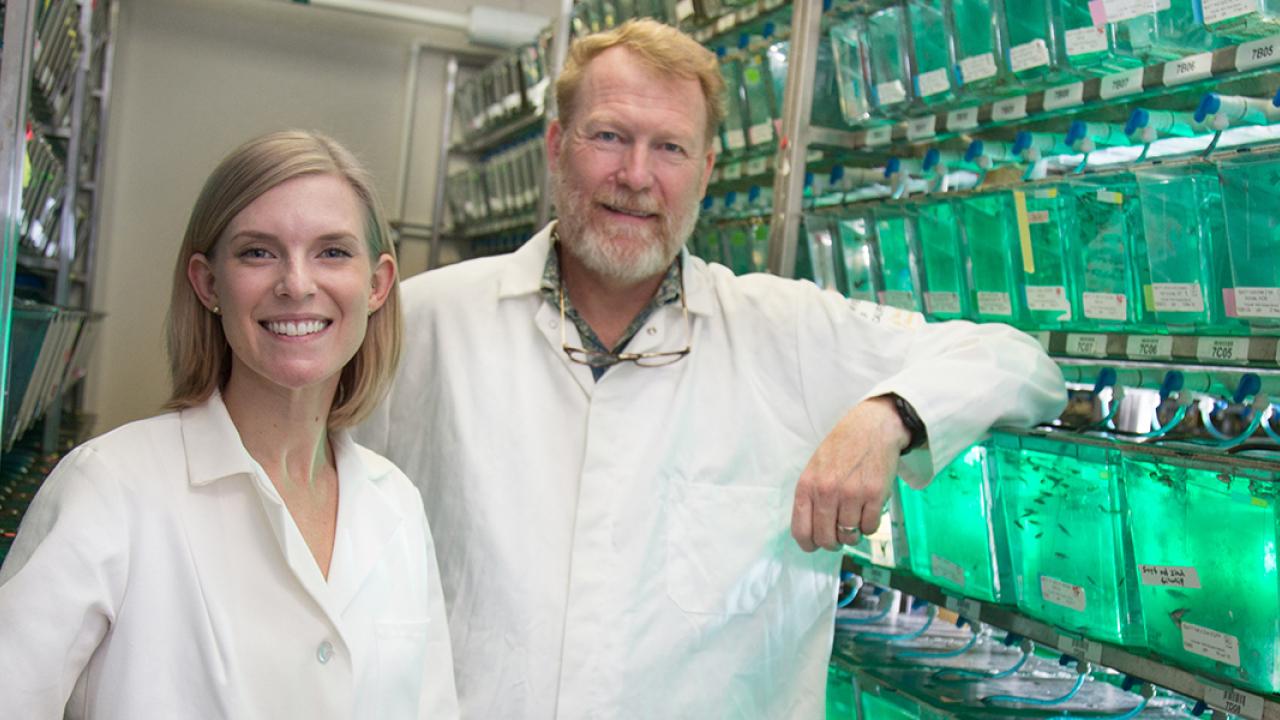
Zebrafish Reproductive Development May Hold Insights into Ovarian Cancer
For thousands of years, animals have helped humans advance biomedical research. Early Greeks, such as Aristotle and Galen, studied animals to gain insights into anatomy, physiology and pathology. Today, model organisms, like mice, help researchers understand human diseases, opening the door to potential defenses and new therapies.
With funding from the National Institutes of Health and the National Science Foundation, Associate Professor Bruce Draper, Department of Molecular and Cellular Biology, is studying zebrafish (Danio rerio) to learn about the genetics of sexual reproduction in vertebrates. Draper’s research, published in PLOS Genetics with postdoc and Dena Leerberg, ’17 Ph.D., a recent graduate of the UC Davis Biochemistry, Molecular, Cellular and Developmental Biology (BMCDB) graduate group, may advance discoveries into the origins of ovarian cancer.
Zebrafish, A Model Species
In the basement of the Life Sciences Building, around 1,500 fish tanks, ranging in size from briefcases to crates, are systematically laid out in rows on metal shelves. Viewed from one end of the room, some of the tanks look empty. But they’re filled with zebrafish, some no larger than the length of a fingernail and narrow as twine. You wouldn’t know it from their size, but these tiny fish, flittering about to the hum of the facility, are making a big splash in scientific research.
Zebrafish have become a popular model organism in biomedical research. Humans share some 70 percent of DNA with the fish, and 84 percent of the genes associated with human disease have counterparts in zebrafish. These genetic relationships make zebrafish a valuable tool for researchers.
The fish breed year-round and have a quick generation time of about three months. A single breeding pair is capable of producing three to five hundred fertilized eggs in one day. They also live in freshwater, reducing the care and maintenance required for saltwater species.
But what makes the zebrafish species a truly powerful model organism is its transparency. Zebrafish embryos are clear, providing scientists a window into the biological machinery behind the fish’s formation.
“If you’re interested in studying the process of early development, all those eggs develop outside the mom,” said Draper. “From the very first cell division, you can see them.”
